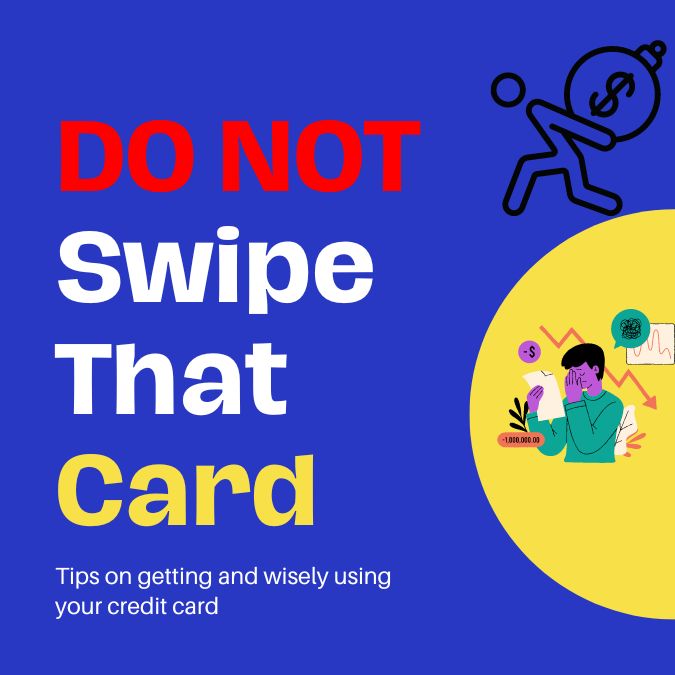Best Student Credit Card : A Double Edged Sword.
In today’s credit based society, a credit card for students, young adults, and any other individuals can be a great, valuable tool for anyone’s financial journey. If used correctly, it can offer a wide variety of opportunities to build credit history, gain independence of one’s finance, and learn how to budget and follow it accordingly. However, it doesn’t always end well, if not used with proper precaution. Having a firm knowledge of the potential risks of having the credit card is crucial to your financial journey. In this post, there are recommendations on the factors you should consider when selecting your credit card.

Choosing the Ideal Student Credit Card

Searching the best student credit card requires careful consideration of various factors. As you embark on your search, keep these key features in mind:
- Low or No Annual Fees
Many credit institutions offer many free annual fee credit cards to students and adults, while also providing valuable benefits. There are many awesome credit cards with annual fee, but start with no annual-fee credit cards. - Rewards and Perks
Many student credit cards come with rewards programs tailored to young adults, offering variety of benefits such as cash-back, discounts, or points for everyday spending and travel. Carefully analyze which benefits are most valuable to you, and select the credit card accordingly. - Introductory APR and Credit Limits
For most student credit cards, credit institutions offer 0% introductory APR. If you’re on a tight budget, this can be a great useful tool to utilize, since you can borrow money for “free” for a specified period (usually 12 months). However, this can be a significant risk when the introductory APR ends and when you are faced with normal ARP, which is usually 24% ~ 28%. If you accumulated significant amount of debt, facing a 28% interest rate, you’re going to be in that dark hole for significant amount of time, paying outrageous amount of interest. Therefore, as this is considered a double edged sword, approach with precaution.
Therefore, carefully weigh the pros and cons of having a credit card, and consider which benefits attract you the most. Personally, for me when I was a student, I enjoyed using Chase Freedom Unlimited and Chase Flex Credit Card.
The Danger of Having a Credit Card: Navigating the Risks

While student credit cards offer numerous advantages, they also come with inherent risks that must be acknowledged and carefully managed. Here are some potential dangers to be aware of if you are just embarking on credit card journey as a student.
- Overspending and Debt Accumulation.
The convenience of swiping a credit card may lead to impulsive spending beyond one’s means. Just because you have a credit limit, it does not equate to owning that money. You’ll have to pay it back, as you are spending the credit institution’s money. Accumulating high levels of debt can quickly spiral out of control, leading to financial difficulty in repayment as a student. This is not a good habit to have as a student. - High Interest Rates and minimum payments.
Although the credit institution provides low or zero introductory APR, at the end of the given period, the normal interest rate will hit. Failing to pay off your balance in full each month will result in significant interest charges. Warren Buffet, the world’s most famous investor, had annual gain of less than 20% for decades. However, you’ll be paying a decent 24% for your loan, a rate higher than that of Warren Buffet — long words short, do not get in debt with credit card companies.
If you had $10,000 credit card debt with 24% interest rate, and if you paid off interest + 1% of balance every month, it will take 354 months for you to get rid of your debt, resulting in total payment of $19,332.21.
The minimum payment displayed on your credit card statement might seem appealing, but making only this minimum payment can lead to a cycle of debt. It prolongs the repayment period and increases the overall cost of borrowing. You will be paying interest on the interest you accrued, and longer this cycle continues, more damage you will incur.
- Impact on credit score
Mismanagement of a credit card can negatively impact your credit score. Late payments, high credit utilization, and carrying a high balance relative to your credit limit can all lower your score, affecting your ability to secure favorable loan terms in the future. Having a low credit score can lead to higher mortgage rates and difficulties in purchasing a home. Additionally, when attempting to rent a property, homeowners and companies may conduct credit checks and deny you due to your lower creditworthiness. This pattern extends to various financial areas, including obtaining car loans. In all these aspects, a low credit score results in unfair treatment and elevated rates, ultimately causing more financial harm compared to someone with a strong credit score.

Conclusion
In conclusion, a student credit card can be a valuable tool for young adults to build credit and learn financial responsibility. By choosing the right card, understanding its benefits and risks, and practicing responsible credit card use, you can set yourself on a path toward a secure financial future.

